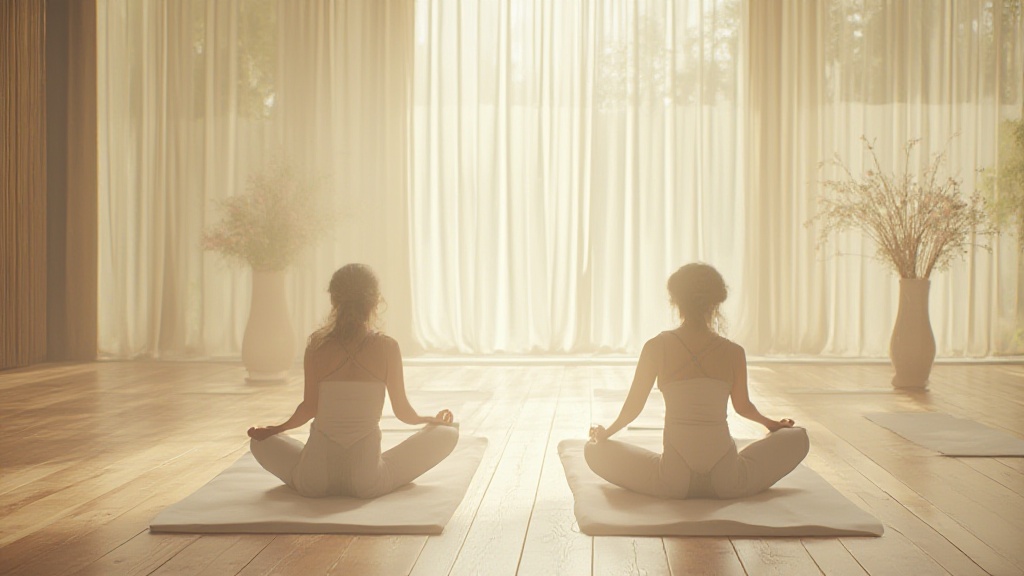
Maintaining flexibility is essential for seniors aiming to improve mobility and independence. Regular flexibility exercises can enhance joint health, promoting an improved range of motion and overall well-being.
Engaging in these low-impact workouts can significantly reduce reliance on caregivers, thereby encouraging active aging.
Simple *stretching routines*, including seated and standing stretches, provide comfort while addressing muscle tension.
Incorporating gentle movements into daily activities helps preserve mobility and allows for a better quality of life. A commitment to consistent practice fosters a supportive environment for elderly health and vitality.
Benefits Of Flexibility Exercises For Seniors
The advantages of flexibility exercises extend beyond mobility enhancement, influencing overall quality of life.
Flexibility routines directly improve mobility, making daily activities smoother and more manageable. Enhanced balance resulting from these exercises can significantly mitigate the risk of falls.
Regular stretching routines strengthen joints and cultivate greater body awareness.
Key Advantages
- Injury Prevention: A ten-minute daily commitment to flexibility training can yield substantial health benefits, including injury prevention and pain alleviation.
- Improved Coordination: Studies show that seniors who prioritize flexibility experience reduced strains and enhanced coordination, ultimately leading to a more active lifestyle.
- Health Benefits: Flexibility exercises support joint health, enhance functional fitness, and promote overall well-being.
Incorporating these exercises into a daily routine reinforces a path towards aging gracefully and maintaining *senior wellness*. With proper guidance, flexibility exercises become a vital component of a comprehensive fitness program tailored to the needs of seniors.

How To Start Stretching Routines
Beginning a stretching routine is essential for enhancing flexibility and overall wellness. Flexibility exercises significantly contribute to improved body function, balance, and joint health.
Prior to stretching, a proper warm-up is necessary to prepare your muscles and joints, thereby minimizing injury risks.
Engaging in light walking or gentle range-of-motion exercises can effectively warm your body.
Aim to focus on simple static stretches for about 5-10 minutes, targeting major muscle groups. For example, performing hamstring and quadriceps stretches helps alleviate muscle tension and promotes better performance.
Prioritizing these practices ensures safety and effectiveness, particularly for those involved in senior fitness and beginners.
Incorporating Mobility Exercises Into Daily Life
Incorporating mobility exercises into everyday activities greatly enhances balance and coordination. Regular practice of these exercises is critical for achieving optimal results, especially for seniors focused on their health.
For example, integrating mobility exercises like leg lifts while brushing your teeth can seamlessly incorporate movement into your routine.
Simple seated or standing stretches improve comfort and flexibility during daily tasks.
Consistency is key; studies indicate that habitual practice leads to long-term improvements in mobility and balance. Adopting these gentle movements offers substantial health benefits, supporting physical therapy goals and advancing overall senior wellness.
Stretching and Mobility Exercises
- Regular stretching can increase flexibility by up to 20% in just a few weeks.
- Engaging in mobility exercises can reduce the risk of falls in seniors by improving balance and coordination.
- Static stretching before physical activities can decrease muscle soreness and enhance overall performance.
- Incorporating mobility exercises into daily routines can lead to significant improvements in joint health and overall physical function.
Tips For Balance Enhancement In Seniors
Enhancing balance significantly impacts seniors’ ability to maintain independence. Regularly practicing balance enhancement exercises at least three times a week can effectively reduce the risk of falls.
Flexibility plays an important role in overall health, contributing to improved mobility and stability.
Incorporating exercises such as Tai Chi and standing stretches promotes coordination and strengthens the core muscles.
These balance enhancement practices not only prevent injuries but also empower seniors to age gracefully. Engaging in low-impact workouts fosters confidence, enabling seniors to participate more fully in daily activities.
Understanding Elderly Health And Flexibility
Exploring the connection between flexibility and elderly health highlights its importance for maintaining quality of life.
Regular physical activity enhances mobility and contributes to overall well-being. Seniors should prioritize stretching routines that focus on major muscle groups, facilitating easier movements in daily activities.
Regular checkups are necessary to monitor flexibility and mobility status, helping to prevent issues related to stiffness and joint health.
Engaging in functional fitness programs can promote pain alleviation and improve the range of motion.
By integrating these practices, seniors can enjoy a more active and fulfilling lifestyle.
Balance Enhancement and Flexibility in Seniors
- Regular balance exercises can reduce the risk of falls by up to 30% in seniors.
- Flexibility training improves mobility, allowing seniors to perform daily tasks more easily.
- Participating in Tai Chi has been shown to enhance balance and reduce fall risk among older adults.
- Stretching routines can improve range of motion and alleviate pain associated with stiffness in joints.
Low Impact Workouts For Joint Health
Maintaining joint health is essential for seniors as they navigate the challenges of aging. Low-impact workouts are ideal for promoting flexibility, which plays a significant role in joint health.
By participating in low-impact exercises, individuals can significantly reduce joint strain, a critical consideration for seniors experiencing mobility issues.
Aquatic exercises, including swimming and water aerobics, offer a safe environment for seniors, enabling them to engage in physical activity without the risk of injury.
This approach not only enhances overall mobility but also contributes to pain alleviation, ensuring that seniors can enjoy their daily activities with greater ease.
Types of Low-Impact Workouts
- Aquatic exercises: Swimming and water aerobics promote joint flexibility and reduce strain.
- Yoga for seniors: Gentle movements improve flexibility and strength while enhancing relaxation techniques.
- Pilates: Focuses on core strength, stability, and flexibility which is beneficial for joint health.
Safe Practices For Seated And Standing Stretches
Engaging in stretching routines is critical for maintaining flexibility and joint health. Proper form is fundamental when performing stretches to prevent injuries and enhance effectiveness. Seniors should incorporate the following practices:
Utilize a chair for support during standing stretches, significantly enhancing safety and stability.
Seated stretches, such as neck and arm stretches, are instrumental in relieving muscle tension and improving range of motion. By concentrating on alignment and technique, older adults can practice these stretches confidently, creating a supportive environment for their physical wellness.
Recommended Seated and Standing Stretches
- Neck stretches: Gently tilt and rotate the head to enhance neck mobility.
- Arm stretches: Extend arms overhead and across the body to relieve tension.
- Leg stretches: While seated, extend one leg at a time to improve flexibility.
Low Impact Workouts
- Low-impact exercises can decrease the risk of injury, making them safer for seniors.
- Regular participation in aquatic exercises can improve cardiovascular health and muscle strength.
- Yoga and Pilates have been shown to enhance balance and coordination, reducing fall risk in older adults.
- Stretching routines can lead to improved joint flexibility and reduced muscle stiffness, promoting overall mobility.
Exploring Yoga For Seniors And Its Benefits
Yoga serves as a highly beneficial practice for seniors, effectively addressing both physical and mental health needs. By incorporating essential flexibility exercises for elderly individuals, yoga enhances their range of motion significantly.
This practice not only improves physical strength, but also promotes mental well-being, offering stress reduction and improved mood.
Engaging in yoga empowers seniors to embrace active aging, while enjoying the tranquility it provides.
The Role of Flexibility in Senior Wellness
Flexibility exercises are central to senior fitness, as they help to maintain joint health and prevent injuries.
Through gentle movements and seated stretches, seniors can enhance their mobility, making daily activities easier to perform. These exercises can also play a crucial role in arthritis relief, as they promote muscle tension relief and improve blood circulation.
Starting Yoga Safely
For those new to this practice, it is advisable to begin with beginner classes tailored for seniors.
These classes provide a supportive environment, allowing individuals to progress at their own comfort level. Incorporating elements of balance enhancement and therapeutic stretching, these sessions can enhance overall wellness programs and contribute to functional fitness.
Utilizing props such as resistance bands can also facilitate a safer, more effective practice.
“Yoga for seniors fosters a pathway to improved health, integrating mind and body for holistic well-being. ”
Consistency is key when practicing yoga.
A regular routine not only supports balance training and posture improvement, but also encourages the incorporation of hydration tips and exercise safety measures.
Engaging in these low-impact workouts establishes a foundation for continued wellness throughout the aging process.
Yoga for Seniors
- Yoga improves flexibility, which is essential for maintaining joint health and preventing injuries in seniors.
- Regular yoga practice can enhance mobility, making daily activities easier and more manageable.
- Gentle movements in yoga can provide relief from arthritis by promoting muscle tension relief and improving blood circulation.
- Participating in beginner classes designed for seniors creates a supportive environment that encourages safe practice and personal progress.
